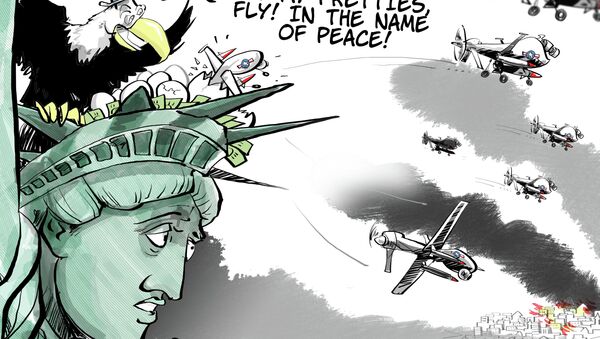The Pentagon, the world’s largest user of drones, acknowledges that the technology’s proliferation may one day be turned against it. The five-sided building where US defense strategy is articulated now has placards posted along the outside reading, "No Drone Zone," and featuring an image of a drone with the ubiquitous “anti” red slash diagonally across the graphic.
Federal law prohibits flying a drone anywhere in and around Washington, an area known as the National Capitol Region, which includes the Pentagon. Notwithstanding the illegality of flying drones within the region, Daniel P. Walsh, assistant director for security integration and technology at the Pentagon Force Protection Agency says, "drones are an emerging threat" that could be used against the Pentagon. He stated that the Pentagon would "leverage every capability we can to protect this building."
At present, however, the Pentagon’s commitment to deflecting a drone attack by a renegade civilian or foreign entity seems to be strictly limited to placing placards on walls.
According to experts, the Pentagon is concerned with drone use because the technology to detect UAVs has not kept pace with the more than 400,000 drones currently in use.
For instance, the recreational drone, the DJI Phantom, cannot be detected by radar because of its low flight altitude and tiny size. In fact, a majority of off-the-shelf drones are difficult to detect and monitor because they fly low and slowly, and don’t carry a radio transponder that could be used to detect their position. These recreational drones are typically plastic and simply too small to be detected.
Drones, particularly smaller recreational drones that could be used in surveillance operations by unknown actors, are also improperly regulated under federal law, meaning there is a preponderance of manufactured drones that are not registered or tracked, in addition to an unknown number of home-built devices.
The influx of drones has led to a corresponding boom for the development of services that can detect them. To date, no service exists that has proven to consistently detect incoming drones. The field is wide open, with few active players. One company, DroneShield, based in Herndon, Virginia, builds sensors designed to detect the unique audio signature of a drone flight.
Until a serviceable method to monitor drones becomes popular, the Pentagon may have no choice but to hope attackers and foreign intelligence services politely respect the posted placards asking them to fly their drones elsewhere.





